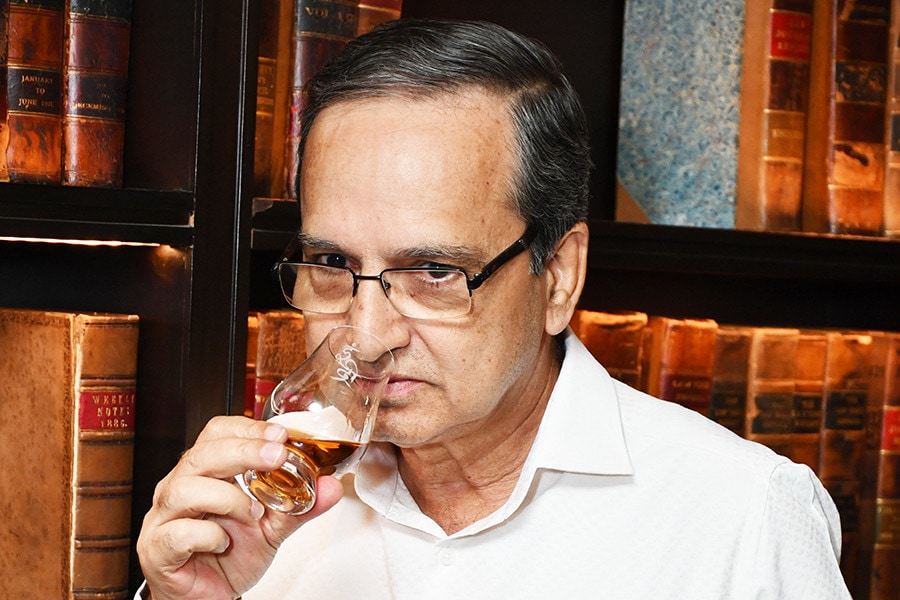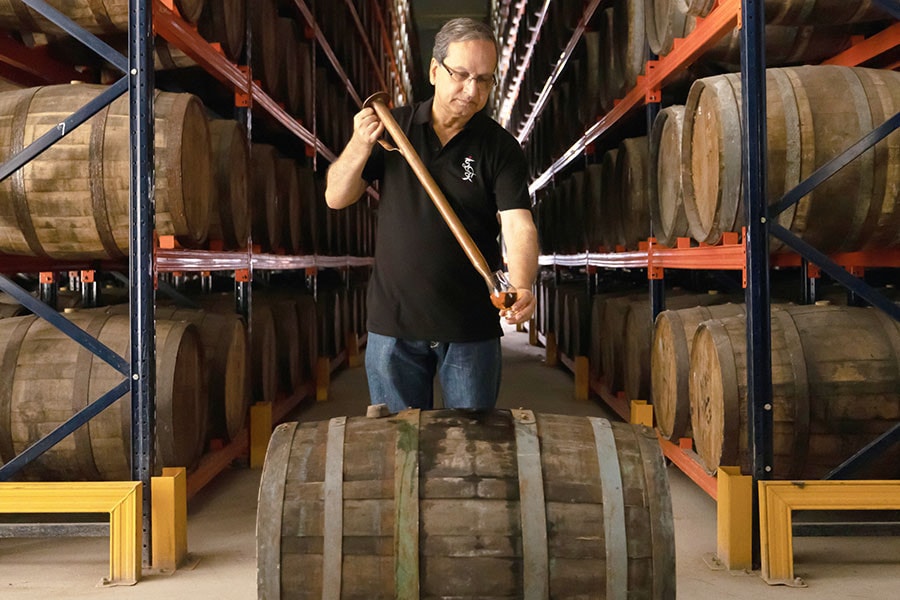
'Indri Whisky has carved a place for itself as one of the best whiskies in not just India but the world': Surrinder Kumar, master blender, Piccadily Distilleries
Known for putting Indian single malts on the global map, Kumar talks about what sets Indri apart, and why comparing single malts from India and Scotland is all about aging
 Surrinder Kumar, master blender and distiller at Piccadily Distilleries, Image: Courtesy Piccadily Distilleries
Surrinder Kumar, master blender and distiller at Piccadily Distilleries, Image: Courtesy Piccadily Distilleries
“From a hazy whisper to a symphony of flavours, this is a masterpiece” is how Indri whisky is described by its makers Piccadily Distilleries. Blended in Haryana, Indri Whisky did India proud at the recent Whiskies of the World Awards 2023, winning the award for the ‘Best in Show, Double Gold’ after rigorous blind tastings over several rounds. At one of the world’s largest whisky-tasting competitions, which evaluates over 100 varieties of whiskies each year, Indri has beaten hundreds of international brands including scotch, bourbon, Canadian, Australian, and British single malts.
Surrinder Kumar, master blender and distiller at Piccadily Distilleries, worked at Amrut Distilleries Ltd till 2019, where he bagged several awards, including Distiller of the Year in 2011. In conversation with Forbes India, Kumar, who is known for putting Indian single malts on the global map, talks about his journey in the alco-bev industry, the art of blending, his favourite whisky, role models and a lot more. Edited excerpts:
Q. How did you start your journey in the alco-bev industry?
In 1986, I had the privilege of being selected by Central Distilleries & Breweries, now a unit of United Spirits, during campus selection interviews. It was a significant turning point in my career, as joining such a prestigious distillery provided me with the remarkable opportunity of accumulating invaluable experience and making substantial contributions to the production and development of spirits and alcoholic beverages. It has played a crucial role in shaping my career trajectory. It has been over 35 years in this profession and the experience has been surreal.
Q. How did you learn the art of blending?






